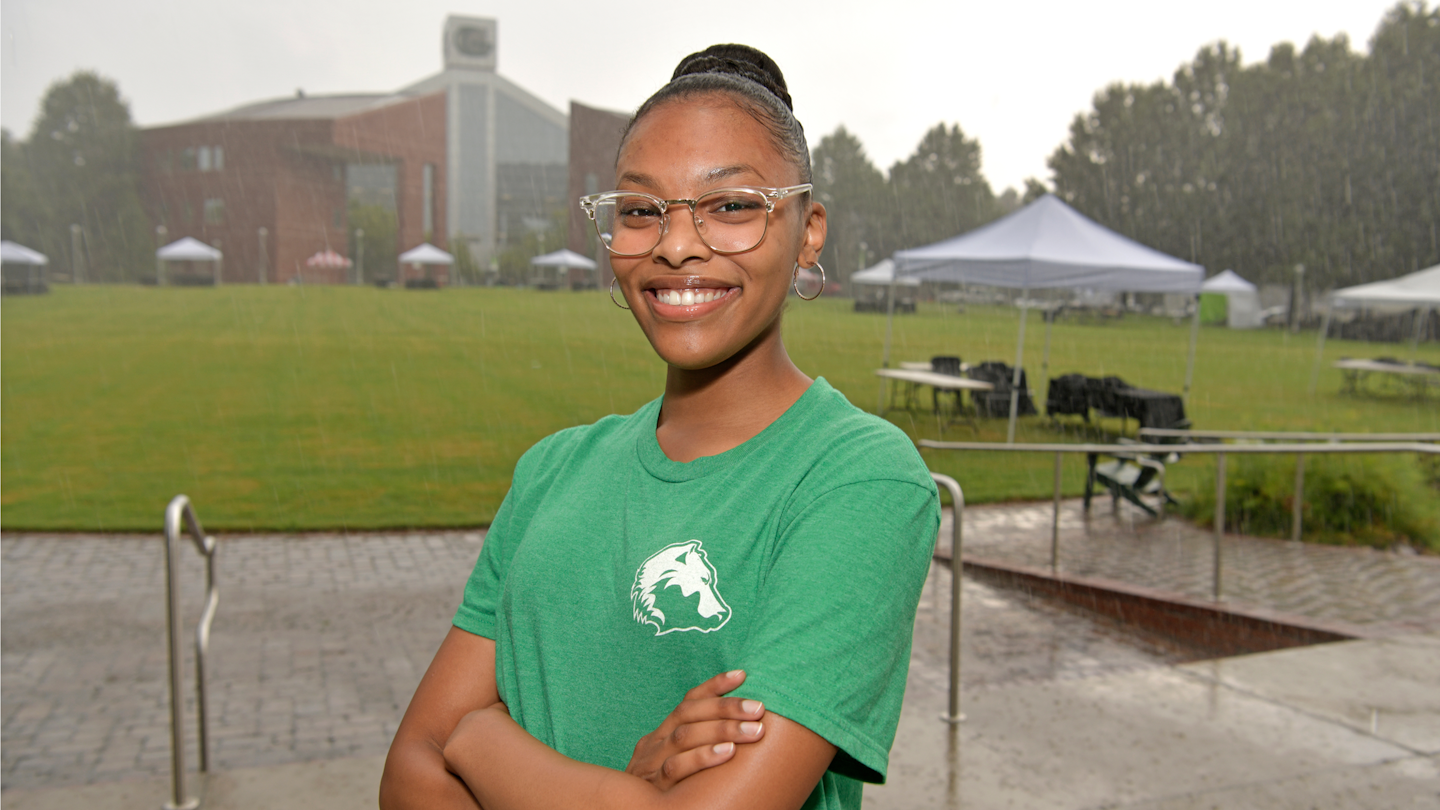How This College Used Data to Keep Students in School
Posted by admin on
 Khamilah Nixon, 19, Georgia Gwinnett College studentKhamilah Nixon, 19, started her first year as an undergraduate at Georgia Gwinnett College (GGC) in fall 2020 in the middle of the pandemic. Navigating a virtual campus and her online computer programming courses baffled her at first after the familiarity of high school.
Khamilah Nixon, 19, Georgia Gwinnett College studentKhamilah Nixon, 19, started her first year as an undergraduate at Georgia Gwinnett College (GGC) in fall 2020 in the middle of the pandemic. Navigating a virtual campus and her online computer programming courses baffled her at first after the familiarity of high school.
“It was a struggle to not interact face-to-face with professors or get support from other students without a real classroom,” said Nixon. “But to overcome that, I found this app that GGC set up.”
One day during her first year, Nixon had internet problems and missed the beginning of her online calculus class. Yet GGC students could log into CircleIn, an app where students built virtual, peer-to-peer study spaces. Nixon's classmate posted lecture notes there, so once her wifi was up and running, she caught up.
Soon, the tutoring tool helped her form a support network, even without a brick-and-mortar campus.
“I helped one of my classmates in a programming class,” said Nixon about CircleIn as a connector. “We went back-and-forth in the app over chats to figure out what went wrong with his code. It was very meaningful to work together like that.”
GGC’s partnership with CircleIn to support students like Nixon came about after months of the College gathering data on student study habits. In January 2020, Dr. Michelle Rosemond joined GGC as vice president for student engagement and success. When COVID-19 hit about two months into her role, Rosemond and her team worked with GGC’s president, Dr. Jann L. Joseph, to use data to keep students in school.
“The key was measuring students, qualitatively and quantitatively, at all points in the pandemic,” said Rosemond. “We needed to understand, quantify, and benchmark what their experiences were in the classroom and outside of the classroom.” Dr. Michelle Rosemond, vice president for student engagement and success at Georgia Gwinnett College
Dr. Michelle Rosemond, vice president for student engagement and success at Georgia Gwinnett College
GGC opened in 2006 in Lawrenceville, Georgia, and it has more than 12,000 undergraduates today. Its student body is hailed as one of the most racially and ethnically diverse in the southern region. That diversity made understanding student needs even more important at a trying time, noted Rosemond. No two students had the same learning environment.
“They told us about challenges around finances and technology, or the lack thereof,” said Rosemond on student survey results she gathered with GGC’s department of Institutional Research and Analytics (IRA) in an emergency data collection plan last spring. “We were figuring out how to work with the campus bookstore to get students laptops. How to make course registration easier. They kept us pretty busy.”
Rosemond and Joseph sought to “get ahead” of student needs, rather than react to them. “The best way to solve a problem is to prevent a problem,” said Joseph.
“One third told us they believed they could have a successful semester,” said Rosemond on the survey. “Then we asked ourselves, 'how do we move the needle to three-thirds? Let’s take tutoring out to the students. Let's take advising out to the students.'”
For example, they found out that students did most of their coursework online from around 1 to 5 in the morning.
“But the faculty are not up at that time to answer questions,” said Joseph. “Yet if that’s the peak time when students are working, we need to advise them in this online environment. That led us to think about flexible work environments with our advisors connecting with students at 7 or 8 at night.” Dr. Jann L. Joseph, president of Georgia Gwinnett College
Dr. Jann L. Joseph, president of Georgia Gwinnett College
Joseph noted that staff needed to also protect their time and not get burned out. If GGC sought to teach students self-care, modeling that with their own staff became a part of this process. So, she and Rosemond worked out another way to support night owl students.
“If you can’t meet them there, then who can you ask who can do it?” said Joseph. “We then worked with the students’ peers.”
GGC partnered with a peer mentor collective to engage with students in the virtual world of CircleIn, where students can also create flashcards together. Rosemond and Joseph plan to continue the peer support programs this coming academic year.
The IRA department will also do weekly check-ins on students. And there will be a faculty task-force to look at the lingering effects of the pandemic on students and staff to find real-time solutions.
“We are ramping up our mental health and wellness initiatives,” said Rosemond. “We want to normalize health-seeking behaviors. We know some students are still in distress, and so we want to get ahead of that this year.”
To Joseph, the past year of trying to keep students in school was a team effort that will carry on with evermore flexibility.
“We are very proud of our institution, but mostly proud of the people who make our institution,” said Joseph. “We are only here because of our students.”
Nixon said she is looking forward to taking her first on-campus class this semester with the community she has found already.
“It’s always good to reach out to at least one person to give you support you need,” said Nixon. “I've found that your professors are willing to help you. They want you to succeed. And just knowing that really helps you not want to drop out of classes."
Rebecca Kelliher can be reached at rkelliher@diverseeducation.com
